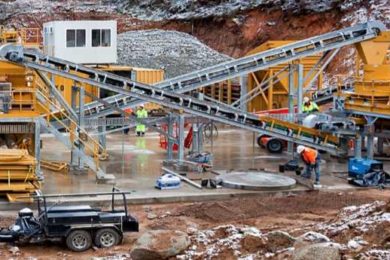International Mining is just finalising its annual review of developments in copper extraction and in its latest examination of the copper market Aurubis is sounding cautiously bullish and says “copper cathodes could be in short supply after the summer break if the order intake picks up further.” www.aurubis.comCommenting on the recession it says “looking back, there is a great consensus that a collapse was narrowly avoided, which is largely thanks to the massive support and rescue programmes for the global financial system. In the meantime, companies in Germany are receiving orders again, industry has increased production and the German export economy is slowly stabilising. But this is all starting from a very low level and recovery could take its time.”For copper, there is potential in this development. The copper stocks in the warehouses of the LME have dropped to 261,000 t and are thus 80,000 t down on the level at the beginning of the year and significantly lower than the year’s high of 548,000 t on February 25. A further 10,000 t are scheduled for removal. About 66,000 t of the LME copper stocks are stored spread over Western Europe, and are only able to cover the copper demand there for one week, if they were available without limitations and at reasonable freight. Since, contrary to Asia, it is not permitted for large copper quantities to be available in European bonded warehouses and we are currently at a low in the inventory cycle of the processing industry, copper cathodes could be in short supply after the summer break if the order intake picks up further.”Developments in China are the second main criteria determining the course the copper market will take in the second half of 2009. Chinese imports of wrought copper and copper products rose significantly again in June for the fourth month in succession and total 475,999 t, i.e. 13% up on the prior month and 175% up on the prior year. About 380,000 t of this quantity is believed to be refined copper. However, there are differing opinions about whether this could include bonded warehouse quantities. The picture is also unclear on another point. Although it has been repeatedly mentioned in the last few weeks that the SRB is taking a break in building up strategic reserves and the physical demand continues to suffer from the weak export business, the arbitrage window has been opened again, even if only slightly – because the copper price has risen on the SHFE to such an extent that it is again more cost-effective to import refined copper.Increased ordering activities in local markets and high liquidity are being given as the reasons for this. Re-exports of cathodes are therefore declining and the withdrawal of quantities from bonded warehouses is increasing. Whether this will be long-term and how it will affect the copper market as a whole cannot yet be said with certainty. This also applies to the price structure on the LME that has again shown backwardation for three month contracts since the beginning of the week. It is supposed to have started with the covering of short positions before the imminent option exercise date and is therefore viewed as short-term. The copper price has held up well in the first half-year with an average of $4,046/t (settlement). For the year as a whole, the Chilean Mining Minister has forecast a price of $2/lb which equals US$ 4,408/t.””According to the latest forecasts of the ICSG, the production capacity for copper concentrates will rise from 2008 to 2013 by 18.4% (3.4%/y). Chile’s Codelco alone wants to start three mining projects in 2010. The spot business for copper concentrates is currently quiet due to a lack of promptly available quantities. The half-year negotiations between mines and Japanese smelters are proving difficult and have as yet not produced results. The supply of copper scrap has improved substantially in recent weeks on account of the withdrawal of Chinese buyers from the market, which has also had the effect that refining charges have risen. The more stringent customs controls in the Chinese ports continue and delay deliveries so that the buying interest is limited.”









